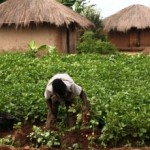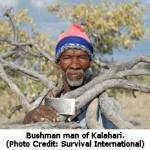 Gland, Switzerland – More than 3 million hectares of newly designated Ramsar Sites in the Republic of Congo will provide vital habitat to endangered species and support the livelihoods of surrounding communities. Congo now counts 10 Wetlands of International Importance, totaling 11.7 million hectares.
Gland, Switzerland – More than 3 million hectares of newly designated Ramsar Sites in the Republic of Congo will provide vital habitat to endangered species and support the livelihoods of surrounding communities. Congo now counts 10 Wetlands of International Importance, totaling 11.7 million hectares.
Anada Tiega, Secretary General of the International Convention on Wetlands, congratulated the Republic of Congo for this major conservation milestone achieved with WWF’s support. Tiega said these new designations come at an opportune time, as nations meet in Hyderabad, India, to shore up commitments to protecting biological diversity.
“During the last meeting of the Convention on Biological Diversity, the 193 member nations set a target to protect at least 17 per cent of their terrestrial and inland water ecosystems by 2020. This move by the Republic of Congo demonstrates how protecting wetlands through Ramsar can help countries meet their commitments,” said Tiega.
The new sites harbour a wealth of plant and animal species, including several IUCN Red-Listed species such as hippopotamus (Hippopotamus amphibius), African elephant (Loxodonta africana), western lowland gorilla (Gorilla gorilla gorilla) and chimpanzee (Pan troglodytes troglodytes).
 They are also home to hundreds of fish species, which are both a source of nutrition and income for surrounding communities. The marshes, ponds, lakes and flooded forests are part of the migration path of more than 200 species of bird. The sites are:
They are also home to hundreds of fish species, which are both a source of nutrition and income for surrounding communities. The marshes, ponds, lakes and flooded forests are part of the migration path of more than 200 species of bird. The sites are:
- Odzala Kokoua: 1,300,000 ha, West Basin Division
- Ntokou Pikounda: 427,200 ha, Sangha Basin Division
- Vallée du Niari: 1,581,000 ha, South of the Republic of Congo
Protecting habitat for charismatic species could enhance tourism opportunities in the Republic of Congo, with potential economic, environmental and social benefits. Sustainable tourism practiced in and around wetlands can contribute to poverty alleviation through the improvement of livelihoods, regional and national economies and support to local cultures.
Source: WWF.












